Not Another Boring Thanksgiving Wine Pairing Article
Chapter Nine, Part Four.
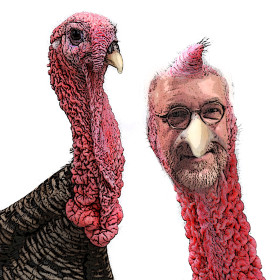 On Thanksgiving my family comes together, shares some wine, enjoys a harvest feast, and watches football, football, and more football. It’s an afternoon filled with aggressive, smash-mouth offence and bold defensive maneuvers. Then we turn on the TV and watch the game.
On Thanksgiving my family comes together, shares some wine, enjoys a harvest feast, and watches football, football, and more football. It’s an afternoon filled with aggressive, smash-mouth offence and bold defensive maneuvers. Then we turn on the TV and watch the game.
Cooking a Thanksgiving meal for 20 people can be a lot of work and very stressful for everyone involved, by which I mean my wife. Of course I help out in a big way as I’m in charge of the wine and stay far from the kitchen. That probably doesn’t sound like much help to you, but then you haven’t been at my house when the wine locusts arrive. The eighth plague was nothing compared to what happens when my people are thirsty.
My wine selection process is simple. I sit on the front porch and sample wine before the guests arrive. Last year the first wine I tasted was so good that I drank the whole bottle. I wasn’t alone mind you, there were lots of people driving by.
Don’t get the wrong idea. I have a lovely family. In fact I love my wife’s brother like a brother-in-law. We gather around the table and I take a heart-warming look at the family, my Uncle Ralph, the turkey, and then my wife brings in the bird. No casual attire at this table. No sir, even the greens are collard.
Read MoreCh Ch Ch Changes to the 1855 Bordeaux Wine Classification
Chapter Sixteen, Part Four.
“Every time I thought I’d got it made, it seemed the taste was not so sweet.” David Bowie
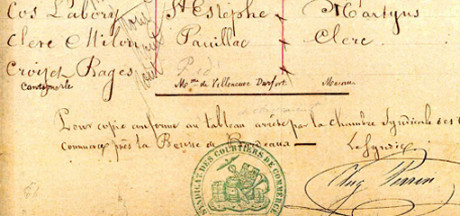 The authors of the Official Bordeaux Wine Classification made an unusual entry on the original handwritten document drawn up in 1855. Cantemerle (now known as Chateau Cantemerle) appears to have been written on the bottom of the historic list in a different hand than the other entries. It is squeezed into a narrow space below the Fifth Growth ranked Croizet-Bages (formerly the bottommost entry) and looks like an afterthought on the part of the authors. Cantemerle was also left off the map of estates that was displayed at the 1855 exposition, although it has appeared on every subsequent map since 1856.
The authors of the Official Bordeaux Wine Classification made an unusual entry on the original handwritten document drawn up in 1855. Cantemerle (now known as Chateau Cantemerle) appears to have been written on the bottom of the historic list in a different hand than the other entries. It is squeezed into a narrow space below the Fifth Growth ranked Croizet-Bages (formerly the bottommost entry) and looks like an afterthought on the part of the authors. Cantemerle was also left off the map of estates that was displayed at the 1855 exposition, although it has appeared on every subsequent map since 1856.
Bordeaux Has Class
Chapter Sixteen, Part Three.
 People are always asking me to explain the term Classified Bordeaux. I might be in the emergency room and the attending physician will say, “Can you explain Classified Bordeaux, and by the way this thing has got to come out,” or I’ll be buying a bottle of Chateau Lafite-Rothschild and the cashier will say, “What exactly is a Classified Bordeaux and that will be $18,000 please.” Since the Bordeaux Classification rarely changes, my answer is always the same; “I can tell you but then I’ll have to kill you because it’s classified!”
People are always asking me to explain the term Classified Bordeaux. I might be in the emergency room and the attending physician will say, “Can you explain Classified Bordeaux, and by the way this thing has got to come out,” or I’ll be buying a bottle of Chateau Lafite-Rothschild and the cashier will say, “What exactly is a Classified Bordeaux and that will be $18,000 please.” Since the Bordeaux Classification rarely changes, my answer is always the same; “I can tell you but then I’ll have to kill you because it’s classified!”
On the other hand, regular readers of WineSnark have already died a thousand deaths by sitting through countless recycled jokes like that one so you deserve to know how Bordeaux got its class.
Back in 1855 when I was just a toddler, Emperor Napoleon III requested an official classification of the Bordeaux wines that were to be presented at the Exposition Universelle de Paris.
Read MoreA Look At French Wine Laws
Chapter Sixteen, Part Two.
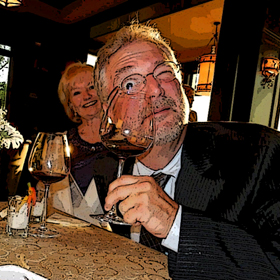 France has hundreds of wine appellations that are broken down into three quality levels; Appellation d’Origine Contrôlée (AC or AOC), Vin de Pays (VdP), and Vin de Table (VdT). These designations are controlled by the Minister of Agriculture, under the auspices of the Institut National de l’Origine et de la Qualité. Rather than adopt the logical acronym INOQ, the organization retained an earlier acronym INAO (for Institut National des Appellations d’Origine) so they wouldn’t have to replace the stationary.
France has hundreds of wine appellations that are broken down into three quality levels; Appellation d’Origine Contrôlée (AC or AOC), Vin de Pays (VdP), and Vin de Table (VdT). These designations are controlled by the Minister of Agriculture, under the auspices of the Institut National de l’Origine et de la Qualité. Rather than adopt the logical acronym INOQ, the organization retained an earlier acronym INAO (for Institut National des Appellations d’Origine) so they wouldn’t have to replace the stationary.
Wine Regulations, Also Known As Acronymphomania
Chapter Fifteen, Part Two.
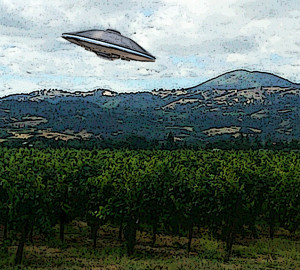 Laws regulating wine end when your blood alcohol level drops below 0.08%, but they start in the vineyard, even before grapes turn into alcohol. Inspired by European appellation wine laws, American wine grape-growing regions fall within demarcated geographic boundaries established by the Alcohol and Tobacco Tax and Trade Bureau (TTB). Before the creation of American Viticultural Area’s (AVA) wine regions were simply designated by county or state. Surprisingly the first AVA, established in 1980, was not in Napa Valley. It was in the Mecca of fine wine production, Augusta, Missouri.
Laws regulating wine end when your blood alcohol level drops below 0.08%, but they start in the vineyard, even before grapes turn into alcohol. Inspired by European appellation wine laws, American wine grape-growing regions fall within demarcated geographic boundaries established by the Alcohol and Tobacco Tax and Trade Bureau (TTB). Before the creation of American Viticultural Area’s (AVA) wine regions were simply designated by county or state. Surprisingly the first AVA, established in 1980, was not in Napa Valley. It was in the Mecca of fine wine production, Augusta, Missouri.
Liquor Laws – You Can’t Make This Stuff Up
Chapter Fifteen, Part One.
 The liquor trade is a seriously regulated business. Liquor laws in New Jersey are enforced by Alcohol Beverage Control agents who carry automatic weapons. That may sound a little extreme, but these agents never know when they may encounter a rude convenience store clerk, or worse, an arrogant wine salesperson.
The liquor trade is a seriously regulated business. Liquor laws in New Jersey are enforced by Alcohol Beverage Control agents who carry automatic weapons. That may sound a little extreme, but these agents never know when they may encounter a rude convenience store clerk, or worse, an arrogant wine salesperson.
New Jersey laws are so strict that under NJ statute R.S. 39:4-50, people convicted of “Driving under the influence of alcohol or drugs, or while ability is impaired by alcohol or refusing to take a Breathalyzer test” are forbidden from purchasing vanity license plates for ten years!¹
Depending on where you live you may have to deal with substantial hurdles when seeking a little libation. In West Virginia for example, it is illegal to give a minor liquor unless you are related by blood or marriage, or the more likely scenario – both.
Read MoreWhen it Comes to Wood, Size Matters
Chapter Thirteen, Parts Three, Seven & Eight.
Different wine regions use barrels of varying size to fit their needs (and maybe their warehouses). The volume of the popular Hogshead barrel seems to vary with every industry, but for wine it has come to mean a 63-gallon barrel, while the uniquely named butt barrel holds two Hogsheads or 126 gallons. The winemakers of Bordeaux find a barrel holding 59.4 gallons is perfectly suited for Cabernet and Merlot based wines. In Montalcino, where tradition dictates that Brunello di Montalcino be aged in cask for three years, wine is matured in large Slovenian casks called botte, or the plural botti, a term presumably derived from butt (those are 6 words I never imagined myself writing). Smaller barrels have a stronger impact on wine, so most Brunello producers use botti because they feel three years aging in small casks would produce overpowering oak flavors in the finished product.
Loving Wine, In Spite of Itself.
Look, I know the drill. I’ve been there myself. You’re in a wine store reading those little signs in front of each wine when you start to feel out of place, kind of like one of those Duck Dynasty guys who mistakenly wandered into a gay pride parade.
Shelf talkers, as they’re known in the trade, tout the virtues of the wine at hand and usually contain a wine review from a magazine or newspaper. As you read something like, “this wine displays aromas of galangal root caressed by nuances of Louisiana road tar,” you find yourself thinking, “I never smell and taste these things in my wine and what the heck is galangal root anyway?”
So I’d like to start by correcting a common misconception caused by these shelf talker wine reviews. No one slipped cat pee into your Sauvignon Blanc or horse manure into your Burgundy. They smell that way on purpose.
Really.
Read MoreThe Angel’s Share. It Will Be Mist.
Chapter Thirteen, Part Five.
 Centuries ago, Cognac producers learned that impermeable oak barrels were very good for keeping spirits in, but not very good at keeping spirits out. When cellarmasters discovered their precious product was disappearing from the barrels locked in their basements, they came to the logical conclusion that angels must be visiting the cellars and drinking from the heavenly casks. The missing portion became known as “la part des anges” or the “angel’s share”. I think most Cognac producers believe the 2% to 4% that disappears every year is fair compensation for the angel’s empyrean influence on their maturing brandy.
Centuries ago, Cognac producers learned that impermeable oak barrels were very good for keeping spirits in, but not very good at keeping spirits out. When cellarmasters discovered their precious product was disappearing from the barrels locked in their basements, they came to the logical conclusion that angels must be visiting the cellars and drinking from the heavenly casks. The missing portion became known as “la part des anges” or the “angel’s share”. I think most Cognac producers believe the 2% to 4% that disappears every year is fair compensation for the angel’s empyrean influence on their maturing brandy.
Two to four percentage points might not seem like much but it adds up over time. A single Cognac cask holds 263 bottles when full. Sixty years later the angel’s share will reduce that by 83 bottles, or approximately half the Cognac Busta Rhymes and Snoop Doggy Dog drink on Tuesday night. On the bright side, Cognac producers don’t have to pay tax on the missing spirit, leaving me to wonder; what does a line item deduction for angel’s consumption look like on a tax return?
Read MorePass The Toast – The Maillard Reaction in Wine Barrel Toasting.
Chapter Thirteen, Part Four.
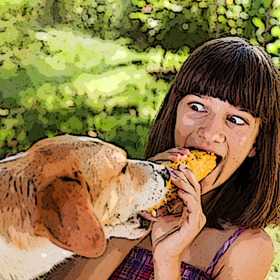 Not long after Kikunae Ikeda discovered umami, a French physician by the name of Louis Maillard (pronounced my-ARD) described the chemical reaction that takes place when amino acids combined with sugar are exposed to heat. This transformation, once known simply as browning, is now called the Maillard reaction. (It is rumored the original name, browning, was named after Maillard’s cook, Dorothea Brown.)¹
Not long after Kikunae Ikeda discovered umami, a French physician by the name of Louis Maillard (pronounced my-ARD) described the chemical reaction that takes place when amino acids combined with sugar are exposed to heat. This transformation, once known simply as browning, is now called the Maillard reaction. (It is rumored the original name, browning, was named after Maillard’s cook, Dorothea Brown.)¹
The Maillard reaction is what turns toasted bread a golden brown and creates the seared crust on protein rich foods like steak or chicken. I think my neighbor was grilling some protein rich food last night because I heard him say, “Hey Carter. Get your dog out of Maillard!”
Read More























